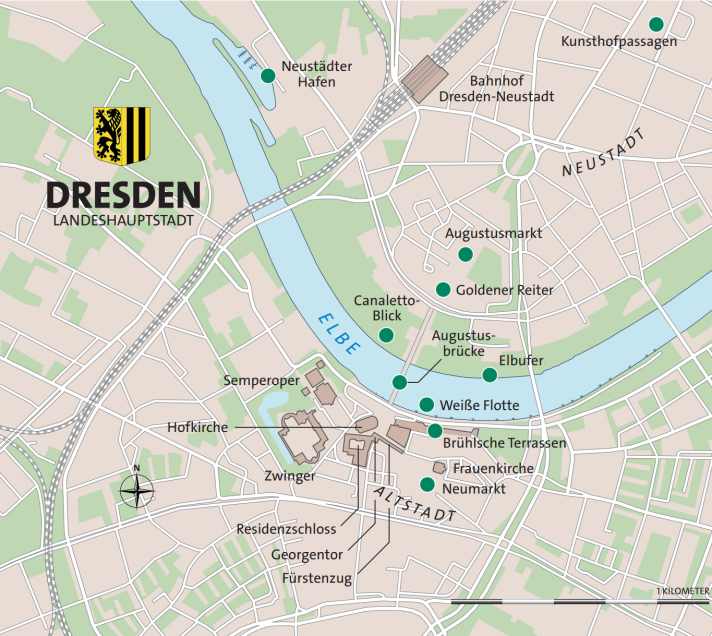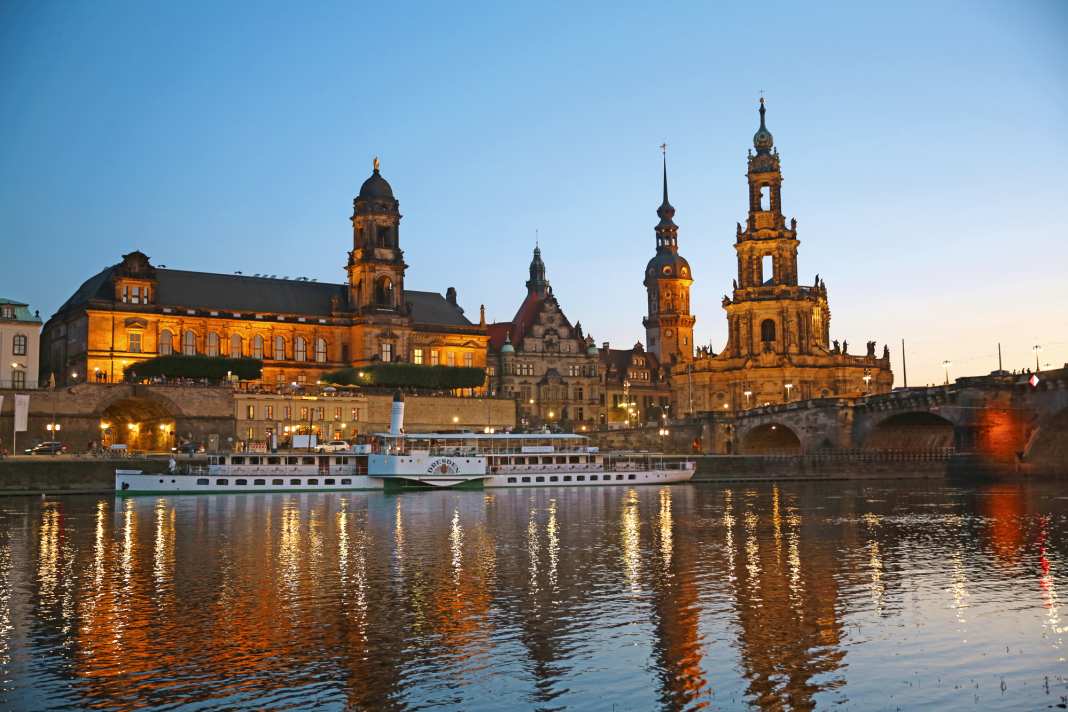





The Elbe offers many highlights on its more than seven hundred kilometre-long route from the German-Czech border to its mouth in the North Sea. Dresden, the "Florence of the North", marks the start. Its world-famous art collections and magnificent buildings, its picturesque location in the Elbe valley - several similarities with the Tuscan metropolis have helped its German counterpart to earn this proud nickname early on. Dresden's Baroque buildings, which were built under Florentine influence and still characterise the image of the Saxon capital today, are often referred to as "music turned to stone". They have made Dresden one of the most popular tourist destinations in Germany. A destination that can also be reached on your own keel. Our city portrait reveals what touring skippers can expect. It's worth the journey!
Arrival on your own keel - Neustadt harbour
The jetties of the White Fleet and the ferries directly on the banks of the Elbe are off-limits. Instead, the Neustadt marina on the right bank at river kilometre 57.3 offers berths close to the city centre and is only a 15-minute walk into the old town. The facility with sixty permanent berths and four day berths has been run by a young team consisting of Kai Roscher and Tino Fleischer since 2021. Since then, the jetty, lighting and electricity columns have been renovated. The catering and event location Die Hafenmeister is located above the marina. Within sight of Dresden's Old Town, you can feast, celebrate and even relax in a newly opened barrel sauna with panoramic windows. In addition to boat hire, SUPs are also available for hire and yoga and Pilates classes are offered. There is a public slipway about five hundred metres down the Elbe. Directly behind Neustädter Hafen harbour, Dresden's Hafencity is currently under construction and is scheduled for completion in 2025.
- Further information: www.dresden-hafen.de
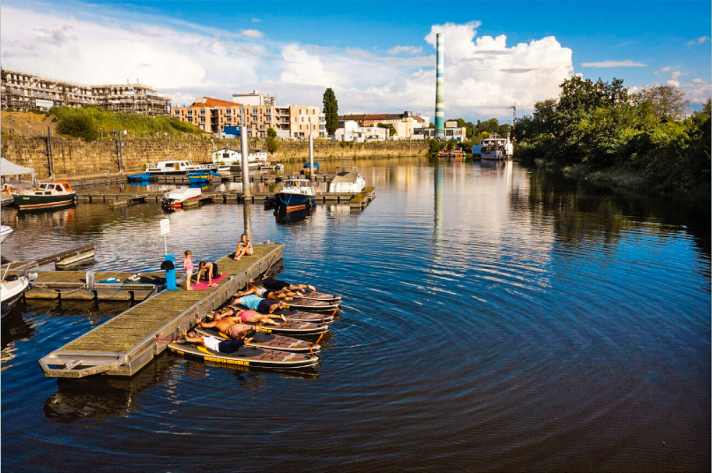
Steeped in history - the baroque old town of Dresden
The best view of Dresden's old town is from the right bank. As early as 1865, it was decided that the Elbe meadows should not be built on so that the river would have enough space to expand during floods. Behind the arches of the Augustus Bridge is the famous silhouette of the city with the church towers and dome of the Frauenkirche. The Venetian painter Bernardo Bellotto, better known as Canaletto, immortalised this panorama in 1747. Today, a large red frame stands where he sat and painted. If you look through it, you can see exactly that famous detail - the perfect portrait of a magnificent Baroque city.
Dresden is a city of short distances. If you approach the Old Town from the Neustädter Ufer via the Augustus Bridge, you are practically right in the centre: straight ahead the Hofkirche and the Residenzschloss with the legendary Green Vault, to the left the Brühl Terraces and to the right the Semperoper and Zwinger with the world-famous Gallery of Old Masters. If you turn left in front of the Georgentor, the original city exit from Dresden to the Elbe bridge, you can marvel at the Fürstenzug. At 102 metres long, the largest porcelain mural in the world shows the dukes, electors and kings of the House of Wettin in a cavalcade, painted on around 23,000 tiles made of Meissen porcelain. Among them is Augustus the Strong, under whose rule the city flourished at the beginning of the 18th century.
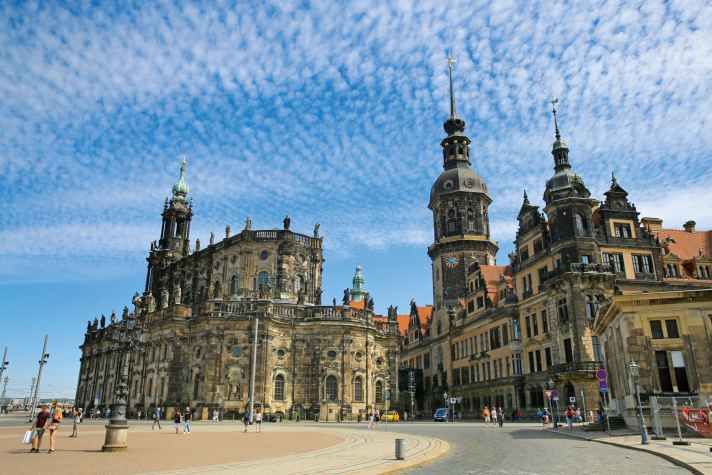
Just a few steps further on is Neumarkt, dominated by the dome of the Frauenkirche. Destroyed in 1945 and rebuilt in its former splendour from 1994 to 2005 (donations from all over the world played a major role in this), it stands together with Dresden as a symbol of reconciliation and hope after the war.
Cultural - Summer in Dresden
The city's cultural programme is huge. From art and classical music to open-air pop concerts, there is something for everyone. Dresden has 55 galleries, 44 museums and 34 theatres and stages. The Palais Sommer, an admission-free arts and culture festival, offers a programme every evening against a historic backdrop. Piano and jazz lovers can enjoy concerts in front of the Frauenkirche, while film fans can enjoy the film nights on the banks of the Elbe. On balmy summer evenings, thousands of Dresdeners gather on the Elbe meadows to enjoy the view of the city lights reflected in the Elbe as the sun sets behind the Augustus Bridge.
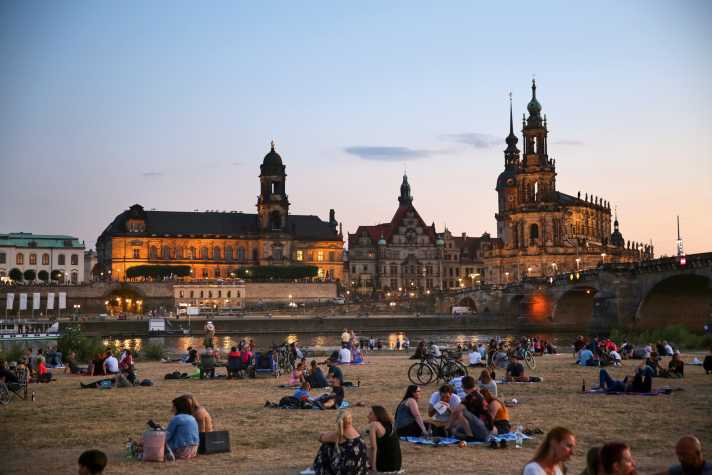
International, creative, young
Just a stone's throw away from the old town on the other side of the Elbe lies the colourful and young Dresden. Bars, galleries and small boutiques with alternative labels are lined up in the trendy Äußere Neustadt neighbourhood. Each of the five courtyards of the Kunsthofpassagen, whose creative façades were designed by a group of artists, has its own theme and is home to small shops and cafés. Not only do you hear many languages here: in addition to the tourists, almost a quarter of the students at the Technical University come from abroad. Among its employees, 98 nationalities are represented. Behind the historical backdrop is a city of the future with a young start-up scene and an internationally networked research landscape. From flexible solar cells to sustainable building materials - the Saxon state capital is one of the hotspots for technical innovation.
Up the Elbe - Dresden from the water
Dresden is not only one of the greenest cities in Europe in terms of technical progress. In addition to the Elbe meadows, there are numerous parks and green spaces. But in the dry summer months, the water level of the Elbe often drops below one metre and the treeless Elbe meadows look like a parched steppe. Those looking to cool off will find what they are looking for on the Brühl Terraces. In the shade of the square-cut lime trees, you can enjoy the view of the Elbe and Neustadt and wait for the next paddle steamer to depart. The jetties of the Weiße Flotte Dresden, the oldest paddle steamer fleet in the world, are located directly below the terraces. The offer ranges from one to three-hour steamboat trips from the banks of the Old Town and along the vineyards and castles of the Dresden hinterland to longer trips across the Czech border.
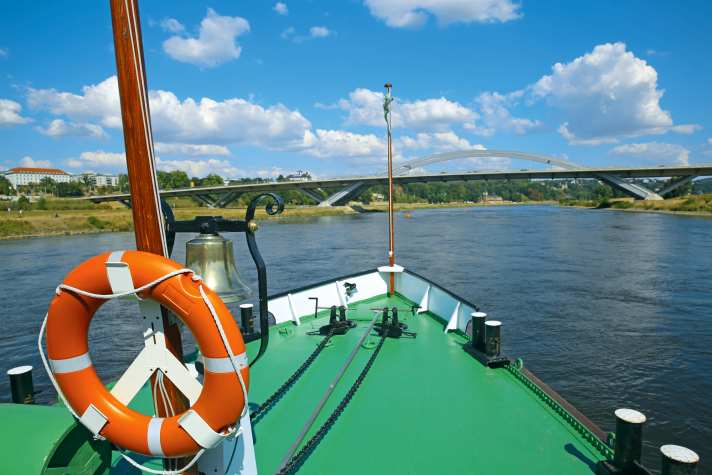
This time, the "Dresden" is travelling a little way up the Elbe. Built in 1926, the passenger steamer is the flagship of the Saxon shipping fleet. The three romantic Elbe castles, Albrechtsberg Palace, Lingnerschloss and Eckberg Palace, which were built within eleven years from 1850, pass by on the banks of the river. Impressive villas are lined up along the vineyards. After three quarters of an hour, you reach another landmark, the Blue Wonder. The bridge has connected the two Dresden villa colonies of Blasewitz and Loschwitz since 1893. The Loschwitz boat harbour with guest moorings is located in the immediate vicinity of the bridge at kilometre 50.4 of the Elbe.
Dresden's surrounding area - Saxon Switzerland
If you follow the river further upstream, you will reach the fourth and probably best-known Elbe castle at kilometre 43: Pillnitz Castle is famous for its Chinese touch, which was considered particularly chic in the 18th century. From here, it is not far to the Saxon Switzerland National Park. The bizarre rock formations of the Elbe Sandstone Mountains, one of the most popular hiking and climbing areas in Germany, are just a forty-minute drive from the city centre. The deep gorges, dense forests and breathtaking views inspired Caspar David Friedrich to create his famous painting "Wanderer above the Sea of Fog".
For skippers, the first German section of the Elbe offers breathtaking views. Spectacular rocky reefs rise up into the sky on the right bank, while isolated table mountains rise out of the plain on the left. If you arrive by paddle steamer, you can set off directly from one of the many piers. But the natural spectacle can also be admired from the water. Depending on the fluctuating level of the Elbe, you can marvel at the Schrammsteine and the legendary Seven Brothers' Houses in Postelwitz. Some steamboat tours take you from Königstein across the German-Czech border. The Bastei offers a picturesque view over the Elbe valley and the sandstone mountains. From here, the rock falls 190 metres steeply down to the river. As the old fortress is one of the most visited tourist attractions in Saxon Switzerland, we recommend climbing up early in the morning.
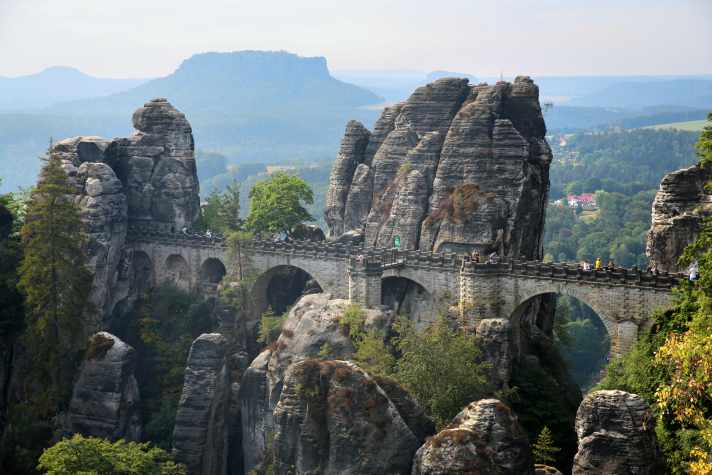
Information about the area
Depending on the water level the upper Elbe is between 100 and 130 metres wide (navigation channel about 50 metres). The current speed is 4-5 kilometres per hour. The water level of the upper Elbe is subject to strong seasonal fluctuations. Melting snow regularly leads to spring floods, with water levels rising quickly by three to four metres.
Persistent heavy rainfall in summer and autumn has the same effect. The highest navigable water level is five metres, above which navigation is blocked. Prolonged dry periods, on the other hand, quickly cause the water level to fall below one metre. The Dresden Shipping Office of the Elbe Waterways and Shipping Office (WSA) is responsible for this.
- Further information: www.wsa-elbe.wsv.de
- All current water levelscan be found under www.elwis.de.
